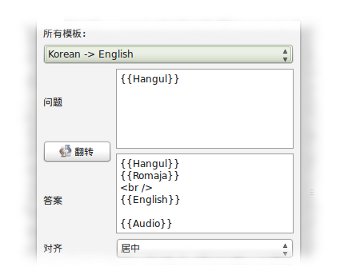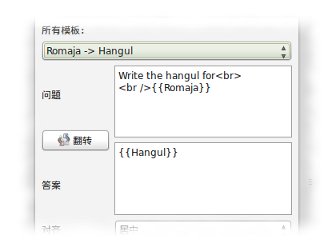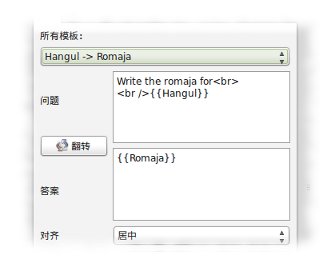Attacking Korean with Anki
So I’ve finally got round to putting some regular time into learning Korean. I’m at the absolute beginner stage, so I’ve set up Anki to get started on the basics!
The way I’ve decided to do this is to separate writing into one model, and then have a different one for reading, speaking and listening together. There are three reasons I’ve separated off writing:
- It makes it easier to keep it granular, that is, break it down into discrete chunks that can be studied efficiently. I don’t revise Chinese writing by writing out sentences, but by writing characters and words (and the odd phrase here and there). That way I can cover a lot of sentences just for grammar and vocabulary practice, but not waste time writing them all out.
- Hangul in particular lends itself to being chopped up and learnt in chunks. Each syllable seems to make a nice block that lets you study both how sounds are represented, and how they combine together in words.
- It seems it’s possible to master hangul in a short-space of time, or at least get very comfortable with it. Having a separate model makes it easy to just leave it be once I’ve got to that stage, and not devote energy to ‘learning’ to write all new material when it’ll just be intuitive.
So my ‘main’ Korean model has these templates:


This model has words, phrases and sentences in it. Notice that I don’t have a dedicated Hangul -> Romaja template, or vice versa. That’s because I want to break that side of it down and put it in a different model with different facts in it.
I don’t want to be writing out / transcribing whole sentences in hangul or romaja, as it seems like a waste of time when I could be reviewing them quickly for their grammar and vocab goodness.
Instead, I’ve got a separate ‘Hangul practice’ model set up like this:


This model only contains single syllables / blocks. When I’m adding vocabulary and sentences to the main model, I also break it up into hangul blocks and add these individually to the hangul practice model. It won’t accept duplicates, so I’ll just slowly build up a set of syllables in there that I’ll learn to write (and directly check pronunciation with the Hangul -> Romaja template).
I’m doing all of the reviewing on my phone with AnkiDroid, and use the white-board function to draw out the stuff on the screen each time. It’s nice and quick, and with these separated models I can put the right amount of time into the different skills of reading, writing, speaking etc.
I’m also doing listening through podcasts and other stuff I download, for now just to get used to the sounds and accent.
I won’t be applying anything like the same intensity to Korean as I do for Chinese. Chinese is my degree and main focus right now, and I don’t want to let anything else interfere with it. For now I’ll just paddle along gently with Korean, letting Anki add in a couple of cards every day and heading forwards inch by inch.
